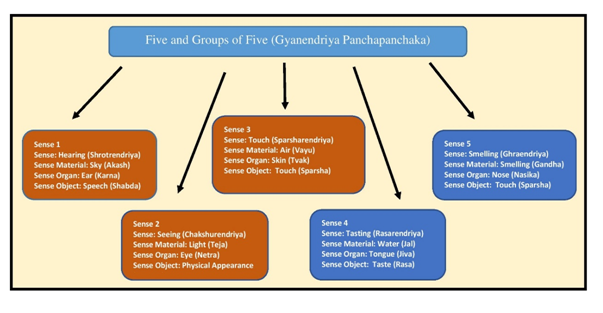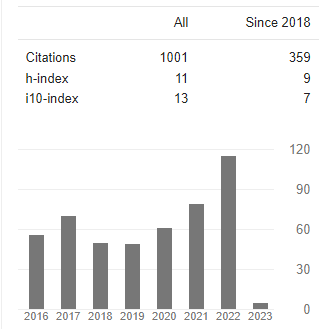PRACTICALITIES OF EVOKED POTENTIAL IN EXERCISE AND SPORTS SCIENCE
Abstract
Evoked Potential (EVP) is an electrophysiological tool to measure sensory conduction from the eyes, ears and somatosensory areas in clinical settings since, computer assisted neurological techniques became readily accessible. First stimulus-based EVP on human scalp was recorded by Pauline Davis in 1939. However, EVP as a measure of neurocognition through sports performance and habitual exercise is a novel area of research. EVP appropriately measures the sensory pathways. Thus, making its application a worthy mention to understand cognitive growth among the players and practitioners. The objective of the study implicates the applications of evoked potential in exercise and sports to understand its practicality over other electrophysiological tools. Anatomical considerations along with Vedic literature references were considered to understand the sensory and muscular coordinates and the impact of regular exercise and training on sports players. Handful of available related literatures were gathered and presented in this conceptual study. Practicalities of evoked potential measures to portray three domains of exercise and training effects which include; Ball games, mind body exercise and graded training. Research is few and needs more study in this area, however available evidence clearly indicates that evoked potential is a direct measure of the sensory pathways represented as graphical wave recordings which are easy to interpret. Thus, EVP being a simple direct neurocognitive tool is recommended over the other techniques to establish the role of exercise in the development of sports players and practitioners.
Downloads
References
Mandolesi, L., Polverino, A., Montuori, S., Foti, F., Ferraioli, G., Sorrentino, P., & Sorrentino, G. (2018). Effects of Physical Exercise on Cognitive Functioning and Wellbeing: Biological and Psychological Benefits. Frontiers in psychology, 9, 509. https://doi.org/10.3389/fpsyg.2018.00509
Schlosser G. (2018). A Short History of Nearly Every Sense-The Evolutionary History of Vertebrate Sensory Cell Types. Integrative and comparative biology, 58(2), 301–316. https://doi.org/10.1093/icb/icy024
Thau L, Reddy V, Singh P. Anatomy, Central Nervous System. [Updated 2021 Oct 14]. In: StatPearls [Internet]. Treasure Island (FL): StatPearls Publishing; 2022 Jan-. Available from: https://www.ncbi.nlm.nih.gov/books/NBK542179/
Makino, H., Hwang, E. J., Hedrick, N. G., & Komiyama, T. (2016). Circuit Mechanisms of Sensorimotor Learning. Neuron, 92(4), 705–721. https://doi.org/10.1016/j.neuron.2016.10.029
Tripathi J.S., Deole Y. S. (2020). Indriyopakramaniya Adhyaya. In: Reddy P.S., Deole Y.S., Basisht G., (Eds.), Charak Samhita New Edition (1st ed. pp.10). CSRTSDC. https://doi.org/10.47468/CSNE.2020.e01.s01.010
Kumar, A. (2020). Sharira Sthana. In: Deole Y.S., Basisht G., (Eds.), Charak Samhita New Edition (1st ed. pp.51). CSRTSDC. https://doi.org/10.47468/CSNE.2020.e01.s04.001
Kolb, B., & Whishaw, I. Q. (2003). Fundamentals of human neuropsychology (5th ed.). Worth Publishers.
Perrey S. (2020). Exercise: A Gate That Primes the Brain to Perform. Brain sciences, 10(12), 980. https://doi.org/10.3390/brainsci10120980
Carter M, Shieh J. Electrophysiology. (2015). Guide to research techniques in neuroscience (2nd Edition)
Holsey GM, Gregers HS, Gunhild W, Steen FK. (2020). Resting state EEG in exercise intervention studies: a systematic review of effects and methods. Frontiers in Human Neuroscience, 14 DOI=10.3389/fnhum.2020.00155
Davis PA. (1939). Effects of acoustic stimuli on the waking human brain. Journal of Neurophysiology, 2: 494-499.
"Guideline Thirteen". Journal of Clinical Neurophysiology. 11 (1): 111–113. January 1994. doi: 10.1097/00004691-199401000-00014. PMID 8195414.
Delpont, E., Dolisi, C., Suisse, G., Bodino, G., & Gastaud, M. (1991). Visual evoked potentials: differences related to physical activity. International journal of sports medicine, 12, 293–298. https://doi.org/10.1055/s-2007-1024684
Shete, A., Garkal, K. & Afroz, S.N. (2019). Effects of Exercise on Visual Evoked Potentials. International Journal of Applied Physiology 8, 2322-3537.
Zhang, X., Zong, B., Zhao, W., & Li, L. (2021). Effects of Mind-Body Exercise on Brain Structure and Function: A Systematic Review on MRI Studies. Brain sciences, 11(2), 205. https://doi.org/10.3390/brainsci11020205
Singh D, Telles S. (2013). Auditory information processing during meditation based onevoked potential studies. Journal Neurology and Psychology. 2013; 1(2): 7
Mandeep Singh. (2018). THE AWARENESS OF MOVEMENT AND FITNESS SCIENCES AMONG SCHOOL, UNDER GRADUATE AND POST GRADUATE LEVEL STUDENTS: EMPOWERING EDUCATION THROUGH PHYSICAL EDUCATION. European Journal of Physical Education and Sport Science, 4(3).https://doi.org/10.5281/zenodo.1218149
SINGH SIDHU, A., & SINGH, M. (2022). KINEMATICAL ANALYSIS OF HURDLE CLEARANCE TECHNIQUE IN 110M HURDLE RACE. International Journal of Behavioral Social and Movement Sciences, 4(2), 28–35. Retrieved from https://ijobsms.org/index.php/ijobsms/article/view/267
Singh, A., & Singh , D. M. (2013). PROMOTION OF RESEARCH CULTURE –ENHANCING QUALITY IN HIGHER EDUCATION. International Journal of Behavioral Social and Movement Sciences, 2(2), 202–208. Retrieved from https://ijobsms.org/index.php/ijobsms/article/view/152
Liu, G. L., Cui, R. Q., Li, G. Z., & Huang, C. M. (1990). Changes in brainstem and cortical auditory potentials during Qi-Gong meditation. The American journal of Chinese medicine, 18(3-4), 95–103. https://doi.org/10.1142/S0192415X90000137
Maudrich, T., Hähner, S., Kenville, R., & Ragert, P. (2022). Somatosensory-Evoked Potentials as a Marker of Functional Neuroplasticity in Athletes: A Systematic Review. Frontiers in physiology, 12, 821605. https://doi.org/10.3389/fphys.2021.821605
Zhao, J. , Pang, S. and Che, G. (2009) Specificity and sensitivity of visual evoked potentials P100 latency to different events exercise. Health, 1, 47-50. doi: 10.4236/health.2009.11009.
Fong, D., Cohen, A., Boughton, P., Raftos, P., Herrera, J. E., Simon, N. G., & Putrino, D. (2020). Steady-State Visual-Evoked Potentials as a Biomarker for Concussion: A Pilot Study. Frontiers in neuroscience, 14, 171. https://doi.org/10.3389/fnins.2020.00171
Lesiakowski, P., Lubiński, W., Zwierko, T. (2018). Evoked potentials in diagnosis of visual dysfunction in amateur boxers, The Physician and Sportsmedicine, 46:4, 449-459, DOI: 10.1080/00913847.2018.1496763

Copyright (c) 2023 Puneet Bhattacharya, Sridip Chatterjee

This work is licensed under a Creative Commons Attribution 4.0 International License.














